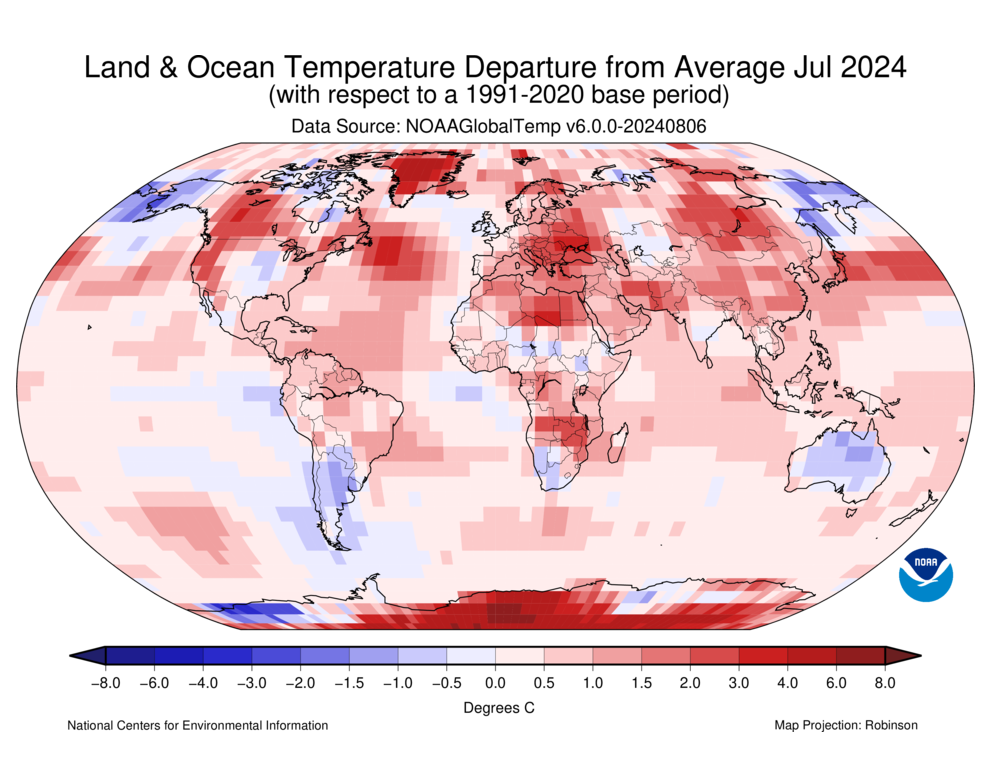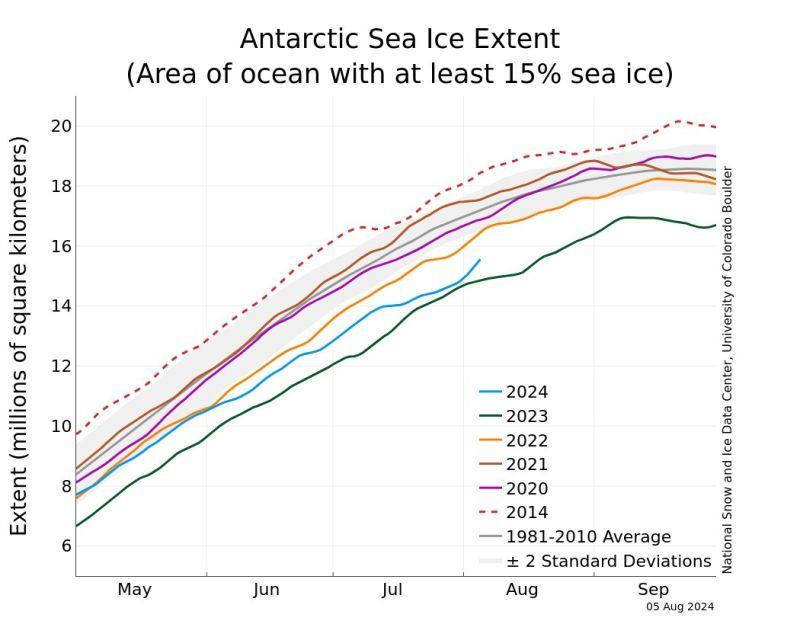July 2024 was the hottest July on record for the World
Written by Meteorologist Mary Wasson
Last updated 8/26/2024, 5:01:40 PM
In July 2024, the Earth experienced its warmest on record in 175 years of record keeping, making it the 14th successive month of record-high global temperatures, according to scientists at NOAA's National Centers for Environmental Information (NCEI).
While July is climatologically the warmest month this year was abnormally warm with the global surface temperature 2.18 degrees above the 20th-century average of 60.4 degrees.
Globally, July 22 was the hottest day, and July 23 was a virtual tie, in the dataset from the Copernicus Climate Change Service (C3S), which is implemented by the European Centre for Medium-Range Weather Forecasting (ECMWF).

Last month, temperatures were higher than usual in many parts of the world, except Alaska, southern South America, eastern Russia, Australia, and western Antarctica. Conversely, Africa, Asia, and Europe had their warmest July, while North America experienced its second-warmest July.
Here’s a breakdown for North America from the World Meteorological Organization:
“In the United States of America, about 165 million people (half the US population) were under heat alerts at the beginning of August, according to the heat.gov. During the past 30 days, more than 80 temperature records were set, according to the US National Atmospheric and Oceanic Administration.
An average monthly temperature of 108 degrees was measured at Furnace Creek/Death Valley which is a record for the site. Death Valley is considered the hottest place on earth, the highest daily temperature 134 °F was observed there on July 10, 1913, according to the WMO Weather and Climate Extremes Archive.”
Sea-Surface Temperatures:
In July, the world experienced the second warmest sea-surface temperatures on record, breaking a streak of 15 consecutive, record-setting months. From January to July, the global sea surface temperature was 2.30 degrees above the 20th-century average, making it the warmest year to date for Africa, Europe, and South America.

Sea Ice Coverage:
Some striking climate statistics include the fact that July saw the smallest sea ice coverage, with only 8.49 million square miles, which is about 1 million square miles below the 30-year average. This marked the second smallest coverage in the 46-year record. Both, the Arctic and Antarctic sea ice extents were below average, with the Arctic falling short by 330,000 square miles and the Antarctic by 760,000 square miles.
.png)

Other Factors:
In addition, the extent of snow cover in the Northern Hemisphere in July was the 11th smallest on record.
Also, tropical activity last month was below average. Seven named storms developed, with two in the Atlantic basin, including Beryl, the earliest Category 5 hurricane on record. There were three in the Eastern Pacific and two in the Western Pacific.
